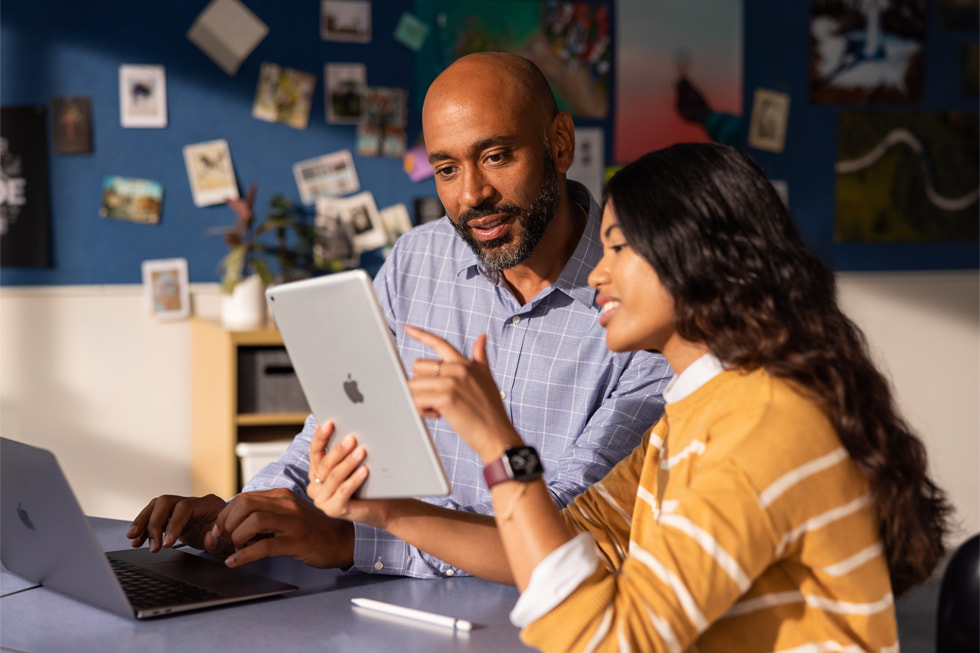E-learning online education or internet encyclopedia concept. Open laptop and book compilation in a … [+] classroom. 3d illustration
getty
Remote learning was a major challenge during the early pandemic, but I always hear that it’s going to be the future of learning. What will be different? originally appeared on Quora: the place to gain and share knowledge, empowering people to learn from others and better understand the world.
Answer by Brian Galvin is the Chief Academic Officer for Varsity Tutors, on Quora:
Over 15+ years in online education I’ve seen the same evolution play out several times. Online Ed 1.0 is all about trying to replicate the traditional experience, falling a bit short, and messaging that the online experience is “the next best thing” for those who can’t make it to the physical classroom. This is what we saw with cameras in lecture halls delivering early MOOCs, with voice-over-PowerPoint class formats, etc.
Online Ed 2.0 begins when institutions start leaning heavily into the benefits of the technology and back away from apologizing for the differences from the physical classroom. You see a lot more student interaction at this phase—more ways for students to give answers and ask questions more frequently, more student-led control of on-screen tools, more real-time mini-assignments, and feedback, etc.
And Online Ed 3.0 picks up as organizations start developing tools, content, and experiences specifically for the online format.
With the early pandemic, districts and teachers got thrown really quickly into Online Ed 1.0 — they were tasked with recreating the in-person experience online, doing it with minimal prep time, and doing it while juggling all kinds of other challenges (trying to figure out device and internet access for students, dealing with the realities of the pandemic in their own homes and families). Many teachers got to Online Ed 2.0 just based on repetition, experience, and sheer will to make a better experience. But by and large, we missed out on the 2.0/3.0 experiences that really are the future of online education.
So what will the future include as educators can be more intentional and thoughtful about online education?
1) Breadth of offerings and access.
A huge part of the promise of online education is that it takes geography and physical constraints out of the equation. A brick-and-mortar middle school, for example, is just really limited to the number of elective classes and after-school activities it can offer. Each one needs a room and a teacher, meaning that each one really requires a minimum of something like 30 kids to even have a chance at being viable. And then you need a teacher who’s willing and expert to take on that topic, find and create the activities, and everything else. But online it’s really easy to cobble together the handful of kids at each school who have a really particular interest, whether it’s graphic design or robotics or cooking or whatever the topic. There may be thousands of learners who would love that class or activity at the same time, but only a few at any given school. Online means you can offer that much more.
And the permutations then become fantastic for learners. A student who would have been bored by a general computers class might get really into her computer-aided design class; a student who loves reading science fiction might find his flock in a sci-fi book club and watch that trickle back to his other classes because he’s engaged in reading and learning.
So the future of online learning involves a lot more availability of learning opportunities, and that personalization has the power to really motivate and engage learners where they are.
2) Personalized Participation
Educational research is pretty clear on two things about participation in class: the more learners participate, the better they do. But also, just about all learners self-censor themselves from participating as much as they should. And online learning has so many advantages here. In a traditional class you’re really putting yourself out there to ask a question, volunteer an answer, go and ask for help after class. Raising a hand puts you on stage, speaking up in front of the entire class puts you on stage, getting seen going to talk to the teacher after class comes with some social stigma.
But online there are so many ways to participate. There’s anonymous polling, there’s private chat, there are breakout rooms. There are easy ways to track who’s been active vs. passive and give helpful, friendly nudges as needed.
In the years I spent training teachers to teach online, almost always the biggest apprehension was “I’m going to miss the back-and-forth with students” and within a week or two of actually online teaching they’d come back and say “wow this is far more interactive than anything I’ve ever taught.”
3) Multiple Modalities
Technology unlocks so many types of activities and demonstrations that can lead to highly varied, highly engaging lessons and experiences. Mini-quizzes and assignments can be administered, graded, and reacted to in real-time, giving teachers seamless opportunities to differentiate instruction or just steer it toward where the need is. Video and audio can be embedded and distributed easily. Students can see and manipulate 3-D models of scientific phenomena. And that’s even before we get deep into augmented and virtual reality which is coming so soon.
We’re just scratching the surface of all the ways that teachers can deliver demonstrations and activities online. Learning happens best when learners are actively a part of it, when they can interact directly with the material. And we’re now at a place where not only can we seamlessly distribute high-fidelity visual aids, but kids can start to manipulate and really interact with them. Where activities can embed video, audio, and digital images to feel that much more authentic and vibrant, and students’ answers or opinions can help determine what comes next. It’s really exciting.
4) AI & Adaptivity
We all know that learners learn best when they’re challenged at a level they can handle but have to work to handle. But how many assignments in our lives just met the “middle” so that students who were struggling got overwhelmed quickly and those who weren’t challenged were left to daydream or doodle for the majority of a class period?
Adaptive assignments and activities are capable of giving some pick-me-ups to students who need review or confidence and challenges to those on the verge of boredom. But that’s just the beginning: we’re on the edge of being able to learn which examples are the most powerful at solidifying a concept, of which review materials can help save a student from a poor performance or just checking out altogether, of which metacognitive questions a system might ask a student to help them course-correct before they make the same mistake over and over.
Adaptive assignments right now do a very good job of providing challenges and confidence-boosters where needed and of using students’ time that much more wisely, but the future is even brighter as activities learn to adapt to supplement education, engage students in ways that reinforce their knowledge, and so much more.
So all in all, mainstream education got a lot of Online Ed 1.0 in 2020–21, just trying to replicate the in-person experience with technology. We’re in Online Ed 2.0 on our way to 3.0 right now in many cases, but not quite across the board. But the tools are in development to not just lean into what’s great about online education today but to really make it everything that it could be. And note that with everything I wrote above the aim isn’t to replace in-person education but largely just to enhance it; we also saw the last few years how critical it is for so many learners to meet in person, have those informal interactions, and engage in the full scholastic experience. So the online education of the future isn’t “all online” but instead a way to highly leverage what technology can do so well with all the things that traditional learning is so good at. The future is hybrid (even though that is a term that also got some rough connotations in 2020, too).
This question originally appeared on Quora – the place to gain and share knowledge, empowering people to learn from others and better understand the world.



